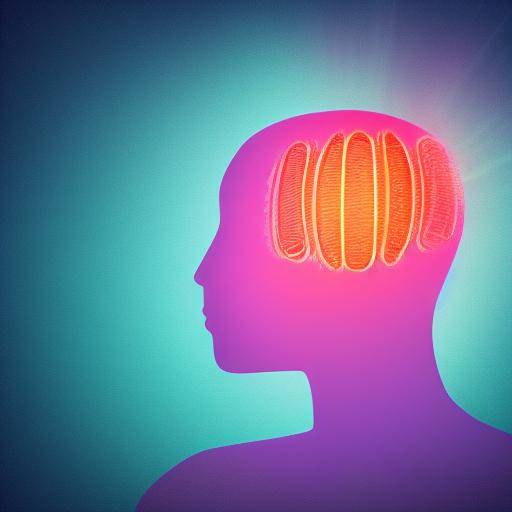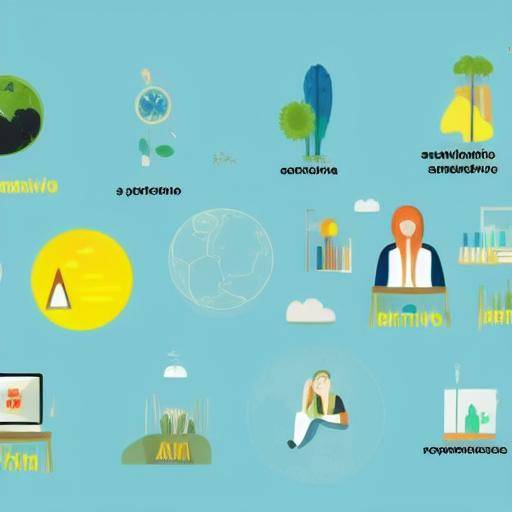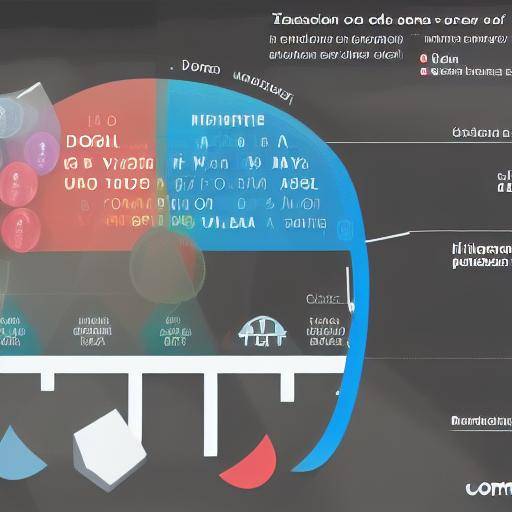
Introduction
The visualization technique is a powerful tool that allows us to influence our attitudes, emotions and behaviors. By using it effectively, we can cultivate a positive mentality that drives us towards success and personal realization. In this article we will explore in depth how to use visualization to develop a positive attitude and constructive mental approach. We will discover the benefits, challenges, practical applications, real examples and future trends associated with these techniques. At the end of the article, you will be prepared to incorporate positive visualization into your daily life, strengthening your mental attitude and focus towards achieving your goals.
History and background
Positive visualization, also known as creative visualization, has its roots in ancient oriental traditions and spiritual philosophies. Visualization practices are considered to have been used for centuries as a way of influencing reality through the mind. However, its popularization in Western culture is largely attributed to the movement of the New Thought at the end of the nineteenth and early twentieth century. Influential figures such as Napoleon Hill and Norman Vincent Peale promoted the idea that positive visualizations could shape a person's reality.
Over time, a positive visualization has been adopted in various disciplines, from psychology to high-performance sport. Since science has explored the mechanisms behind these practices, it has been shown that visualization can have significant effects on cognition, emotion and human performance.
In-depth analysis
Positive visualization offers a series of benefits for the mind and body. Scientific studies suggest that visualization can improve concentration, reduce anxiety and strengthen emotional resilience. In addition, it has been noted that positive visualizations can have a significant impact on the recovery of injuries, sports performance and the achievement of personal and professional goals.
Despite these benefits, positive visualization does not lack challenges. Some people may feel difficulties in clearly visualizing or experiencing skepticism about their effectiveness. Moreover, the unrealistic or unrelated visualization of concrete action can lead to complacency or avoidance of reality.
Comprehensive review
The practical application of positive visualization extends to various areas, including psychotherapy, coaching, leadership and personal development. Professionals in these fields use visualization techniques to help their customers overcome obstacles, improve their strengths and achieve their goals. Structured programmes have also been developed that combine visualization with strategic planning and deliberate action, maximizing its effectiveness.
Despite its benefits, positive visualization is not a panacea and does not replace effort, discipline and skill. A firm commitment, mental focus and positive attitude are required to carry out the actions necessary to convert visualizations into tangible results.
Comparative analysis
Positive visualization, mental focus and positive attitude share a common denominator: the influence they exert on the cognition and perception of reality. While visualization focuses on creating vivid mental representations of the desired situations, the mental approach involves directing attention and energy to specific goals. For its part, the positive attitude reflects the emotional and cognitive predisposition towards circumstances, influencing interpretation and response to events.
Although these techniques have different approaches, they interact synergically. Visualization can strengthen the mental approach, aligning attention and intent in achieving long-term goals. At the same time, a positive attitude can facilitate visualization by creating an emotional terrain conducive to the manifestation of the desired reality.
Accessible practical advice and recommendations
If you are interested in applying positive visualization, mental focus and positive attitude in your life, consider the following practical tips:
- Dedicate time regularly to visualize your goals and objectives, using all your senses to imagine the full experience.
- Keep a visualization magazine where you register your thoughts, emotions and observations about your visualizations.
- Establish visual or verbal reminders that reinforce your mental approach and positive attitude at key times.
- Find the support of mentors, trainers or friends who can provide you with constructive feedback and encouragement in your personal visualization and development process.
- It integrates positive visualization with strategic planning and concrete action, fostering a proactive and results-oriented mentality.
Industry perspectives and expert reviews
Several experts in psychology, coaching and personal development agree that positive visualization, mental focus and positive attitude can be powerful catalysts for personal and professional change. The integration of these techniques into training, leadership and therapies programmes has shown encouraging results in strengthening performance, resilience and emotional well-being.
“ Positive visualization is a valuable tool to align the mind, emotions and actions towards achieving significant goals. Combined with a positive attitude and a clear mental approach, it can improve our potential and unlock new opportunities," says psychologist and personal trainer Maria Rodriguez.
Case studies and practical applications
Numerous success stories support the effectiveness of positive visualization, mental focus and positive attitude in various contexts. Of elite athletes who use visualization to improve their performance to entrepreneurs who overcome obstacles with a resilient attitude, abound examples of practical application. In addition, educational and therapeutic programmes have integrated these techniques with promising results in stress management, self-confidence promotion and the momentum of intrinsic motivation.
Future trends and predictions
As the understanding of the interactions between mind and body is deepened and the application of personal development practices is expanded, positive visualization, mental focus and positive attitude are expected to increase attention and integration in areas such as health, sports performance, talent management and entrepreneurship. The combination of virtual reality, biofeedback technologies and neuroscience promises to expand the visualization possibilities, providing more immersive and effective experiences.
Conclusion
In short, positive visualization, mental focus and positive attitude are valuable resources to improve personal development, overcome challenges and achieve ambitious goals. By integrating these techniques into our daily lives with commitment, discipline and focus, we can build solid foundations for achievement and realization.
Frequently asked questions
Is it positive visualization like fantasy?
No, positive visualization implies creating clear and vibrant mental representations of the desired situations, with the intention of promoting concrete actions to realize those visions. Unlike fantasy, positive visualization is based on conscious intent and alignment of thoughts, emotions and actions.
What role does mental focus play in positive visualization?
The mental approach is crucial in positive visualization, as it guides attention and energy towards the realization of specific goals. A clear and determined mental approach can increase the effectiveness of the visualizations by aligning the mind with the intent to achieve.
How can a positive attitude be cultivated in everyday life?
Creating a positive attitude involves practicing gratitude, focusing on solutions rather than problems, surrounding positive people, adopting a culture of growth and caring for emotional and physical well-being.
Does positive visualization guarantee success?
Positive visualization does not guarantee success alone, as it is only a part of a wider process that includes strategic planning and deliberate action. However, it can be a powerful tool to strengthen trust, improve performance and maintain motivation on the path to success.
Can people with a pessimistic attitude benefit from positive visualization?
Yes, people with a pessimistic attitude can benefit from positive visualization by practising it in a systematic and committed way. Through visualization, it is possible to reschedule mental and emotional patterns, fostering a more positive and proactive attitude.
What role does positive visualization play in stress management?
Positive visualization can be an effective tool to reduce stress by encouraging relaxation, visualizing quiet situations and creating more balanced mental and emotional states. By integrating visualization into stress management practices, it is possible to strengthen resilience and emotional well-being.
Is it necessary to be visually creative to practice positive visualization?
Not necessarily. Although visualization implies a mental representation of the desired experiences, it is not limited exclusively to the visual sense. Some people can use hearing, touch, smell and taste in their visualizations, adapting them to their individual sensory preferences.
In conclusion, the visualization technique is a powerful ally in the search for a positive mentality and a constructive mental approach. By understanding its foundations, applications and benefits, we can effectively integrate it into our daily lives, improving our ability to achieve our goals with determination, confidence and optimism.












































